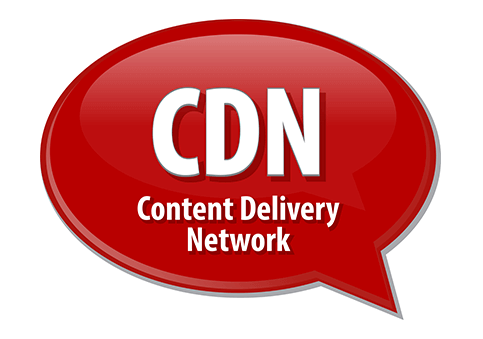Image CDN

The rise of the e-commerce economy has created a more level playing field for entrepreneurs, so much so that even a one-person business can now reach out to customers anywhere in the world courtesy of a website. In order to succeed in the highly competitive digital marketplace, however, having an e-store is not enough. You have to generate heavy traffic to your website in order to increase your chances of converting leads, which in turn can translate to more sales.
The key to driving traffic to your e-commerce site is to enhance its overall user experience, and one way to achieve this is by using high-quality images and videos, which also helps improve your SEO ranking. One caveat is that images can slow down your website if they are not optimized, and a slow-loading website is known to drive visitors away.
This is when you need a content delivery network (CDN). Whether you’re a blogger, an e-store operator, or owner of a website with downloadable image files, an image CDN can optimize your images and make them responsive for either the desktop or mobile devices. This is accomplished by reducing the latency of your image delivery, resulting in faster loading images and thus, faster loading web pages.
Some of the content network delivery companies that can accelerate your website with faster images are Cloudinary, Cloudflare, and Jetpack, KeyCDN, Amazon CloudFront, Microsoft Azure CDN, CDN77, and BelugaCDN (https://www.belugacdn.com). They optimize images using various techniques such as automatic quality adjustment and encoding, automatic formatting, and resizing and cropping.
These CDN service providers also have the tools to optimize images for WordPress. KeyCDN, for example, employs an image optimizer called Optimus, Jetpack has Site Accelerator, Cloudinary uses SDKs and a URL-based API, and BelugaCDN utilizes a next-gen IPv4/IPv6 dual-stack network.
Choosing the Best Image CDN
By optimizing your images and delivering them to your end users as quickly as possible, a CDN speeds up your website’s performance. In addition, your images will also be more likely to rank higher in Search Engine Result Pages (SERPs). If you are ready to invest in a CDN, use the following criteria to help you choose the one that will help you get the most out of your images and your website more generally.
- Performance
Two key metrics of CDN performance in terms of increasing your website’s loading times are latency (the time it takes for content to be transferred across a network) and throughput (the amount or quantity of content that is being delivered and received by the end user within a certain period of time).
Does the CDN have the capability to make your images load faster by optimizing routes, for instance, or minimizing trips and reducing packet loss? A high-performance CDN should be able to deliver your images seamlessly to your users, on any device, and enhance their engagement with images that are not only visually appealing but also fast.
Moreover, it should employ a suite of web optimizations, such as the latest web standards, as well as proprietary enhancements and load balancing methods for images. - Reliability
Websites can experience outages or downtime due to unexpected surges in traffic, so it is essential that the CDN has the capability to route around congestion in order to keep your website running at optimal speeds in spite of traffic spikes and heavy loads. It is also expected to deliver increased uptime, perhaps by leveraging the most reliable links, when servers become overloaded or unavailable. - Security
The best CDNs recognize how subtle and diverse the cyberthreat landscape can be, but have the infrastructure in place to detect and deter any malicious activity. Check whether the CDN has a solid reputation for protecting applications and content against abusive bots and malware, DDoS attacks, or bad IP addresses.
Look for a service provider that employs Secure Sockets Layer (SSL)/Transport Layer Security (TLS) encryption to prevent DNS flood, UDP amplification, packet sniffing, man-in-the-middle attacks, and other sorts of threats. - Service/support
Content delivery network companies must be available 24/7/365 to provide responsive technical/customer support via phone or live chat. Furthermore, their technical support staff must have the expertise to resolve even the most complex problems that arise using a proactive approach. - Analytics
It is also important for an image CDN to have an analytics platform for monitoring your web traffic statistics in real time, or your total bandwidth, number of hits/miss, hits per second, completion ratio, total number of requests, complete delivery/requests by data center, origin transmission, end-user transmission, etc. - Costs
Depending on the service provider, a CDN can be expensive. A monthly bandwidth of 2,500 GB, for example, costs between $150 and $200, while 200 TB can go as high as $12,000 per month. Compare plans and choose the one based on your website’s requirements.
Bottom line
Today’s digitally empowered consumers want a seamless browsing experience, especially on their mobile devices, and are impatient with slow-loading websites. If your web pages are being slowed down by too many images, an image CDN can help. BelugaCDN (https://www.belugacdn.com) has the tools to make your image files load faster by as much as 20-40 percent by leveraging a future-proof IPv4/IPv6 dual-stack network – for 1/4 the cost of its competitors including MaxCDN, Google Cloud CDN, Amazon CloudFront, and Microsoft Azure.
In addition to accelerating the delivery of your images and other content, BelugaCDN has built-in protection against DDoS attacks, along with real-time analytics, instant and unlimited cache purging, secure token, custom SSL, API, and responsive technical support. BelugaCDN proves that you can have a high-performance website on a budget.
Power-up your Content Delivery
30 Day Free Trial Cancel Anytime